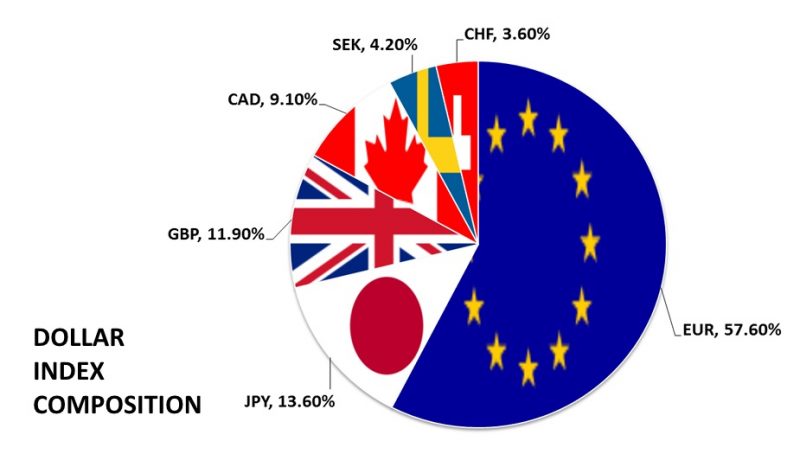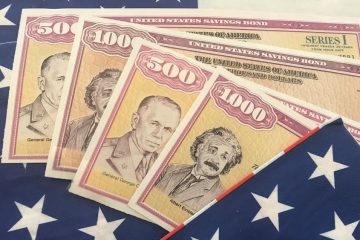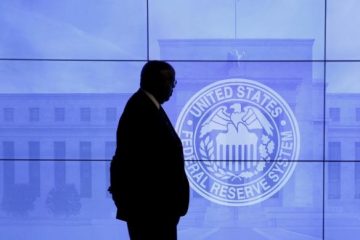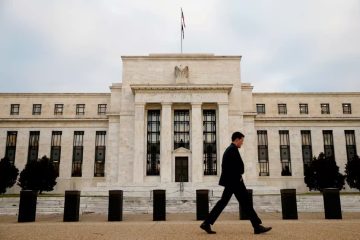Runaway dollar sends shiver through world markets

LONDON : The U.S. dollar’s renewed surge and signs that it will build on current 14-year highs are leaving a trail of destruction through world currency markets and forcing policymakers to rethink mechanisms to deal with the fallout.Currencies from the Indian rupee to the offshore version of the Chinese yuan have hit record lows to the greenback this week, and if history is a guide, another year or two of pain lies ahead for them.
Judging from the U.S. Federal Reserve’s trade-weighted index, past dollar strength episodes have tended to last about seven years. So the current rally, dating from mid-2011 and averaging 4 percent annually, can be expected to run until 2018.
This month’s move – not yet captured by the Fed’s monthly and weekly data – has been driven by expectations that Donald Trump’s election spells tax cuts, infrastructure spending and an amnesty for corporate dollars parked overseas that will fuel inflation and bring capital flooding into the United States.
That in turn could induce the Federal Reserve into more and faster interest rate rises that will support the dollar as the currency of choice globally for investors seeking better than zero returns for their money.
Analysts at Deutsche Bank, long the most extreme dollar “bull” of the major banks that dominate the $ 5 trillion a day currency market, spoke this week of a “perfect storm” for the dollar. Strategists at Goldman Sachs dubbed the U.S. election a “reset” for the currency.
The list of dollar victims is growing and economists and policymakers are starting to wonder whether the dollar’s surge could derail the very recovery in demand and inflation that would drive it higher. Emerging markets are vulnerable.
* Parity beckons for the euro. Deutsche Bank forecasts the European single currency to fall to $ 1.00 by June next year, and $ 0.95 by year end. Goldman predicts parity within 12 months but says that may now happen sooner.
* The Bank of International Settlements warns the dollar is now the best barometer of global investor risk appetite and financial market leverage, making its current surge potentially destabilising.
* In emerging markets, a quiet period over the spring and summer has dissipated with some currencies falling 5-8 percent this month tmsnrt.rs/2e7eoml
* Bearish bets on currencies including the yuan are the highest in months and many policymakers are intervening or raising interest rates to soften violent exchange rate moves .
* The Turkish central bank on Thursday raised interest rates by a half point for the first time since early 2014, after a 14 percent fall in the lira this year. .
* Chinese state-owned banks stepped in to sell dollars as the yuan slid towards 7 per dollar for the first time since 2008. Policy advisers told Reuters Beijing is ready to slow the yuan’s descent for fear of fanning capital flight. .
* The Reserve Bank of India intervened repeatedly on Thursday to lift the rupee off record lows. The bank spent around $ 500 million in the morning but had to step in again as the rupee slipped towards 70 per dollar
* Mexico raised interest rates for the fourth time this year as the peso tumbled to a series of record lows. Officials said more rises are likely.
* Economists speculated Brazil might hold fire on a cut in interest rates next week after the real fell 4.5 percent on the month
* The Philippines’ central bank governor said he would not hesitate to intervene after the peso hit eight-year lows .
* Malaysia asked foreign banks for a written commitment to stop trading ringgit in offshore non-deliverable forwards (NDF) as it tried to protect a currency at 14-month lows. The central bank denied it is planning capital controls
* Traders suspect Indonesia of intervening in rupiah markets as the currency hit six-month lows
* The pace of the shift has taken most by surprise. Only one of the 40 banks polled by Reuters at the start of November expected the dollar to trade above 108 yen by Dec. 1. Only ten forecast it reaching the current 113 yen within a year.
* The Fed’s broad dollar index is weighted according to trade volumes. China now accounts for 22 percent of the index – more than double the ratio when the dollar last peaked in 2002.
* The slides in the index over the past two years have corresponded to periods when the yuan was weakening sharply, rather than the euro or the yen.
* US-European bond yield spreads have blown out to the widest in years – the interest and exchange-rate sensitive 2-year spread its widest in 11 years, and the benchmark 10-year spread its widest in over quarter of a century.
* Since the start of the dollar’s rally in July 2011, the 2-year U.S.-euro zone yield spread has moved around 300 basis points in favour of the dollar. The euro has fallen nearly 30 percent to $ 1.05 in that time.
* In the dollar’s five-year rally, U.S. stocks have almost doubled to fresh record highs while MSCI’s benchmark emerging market index is down nearly 30 percent.



